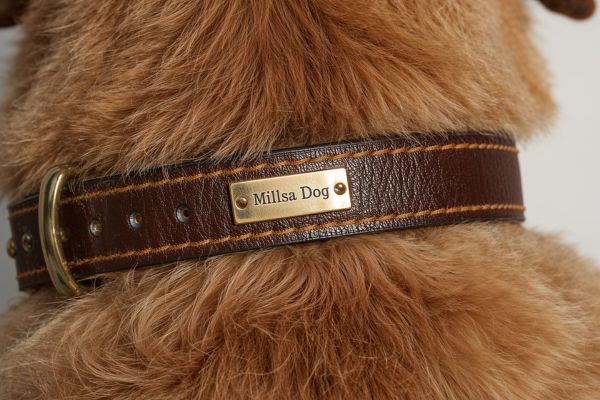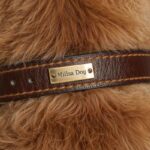When it comes to teaching your dog good manners, choosing the right tools makes a world of difference. And let’s be real, not every pup learns at the same pace. Some pick things up quickly, while others act like you’re speaking another language. That’s where the best training collars for dogs come in handy. They’re not a magic fix, but they can definitely make the training process smoother when used the right way.
Why Consider Training Collars for Dogs?
Dogs, just like people, respond differently to different learning styles. Some are food motivated, others are more focused on play, and then there are those stubborn ones who test your patience at every walk. Training collars are designed to give you more control and add an extra layer of communication. The thing is, when you’re trying to correct pulling, barking, or other tough behaviors, sometimes a regular leash and collar just don’t cut it.
But here’s the key: training collars aren’t about punishment. They’re about guidance. Think of them as a tool that helps you bridge the gap between what you want your dog to do and what they actually understand.
Types of Training Collars You’ll Find
When searching for the best training collars for dogs, you’ll notice a variety of options. And each type has its own vibe.
Flat Collars and Martingale Collars
Flat collars are the standard everyday option. They hold tags, look cute, and work fine for pups who don’t pull or lunge. Martingale collars, on the other hand, tighten slightly when your dog pulls but without choking. They’re especially good for dogs with slimmer necks like Greyhounds because they prevent slipping out.
Head Collars
Head collars look a bit like a halter for a horse. They fit around the nose and give you direct control over where your dog looks and moves. They can feel weird to dogs at first, but once they get used to it, they work wonders for controlling pulling.
Prong and Pinch Collars
These sound harsh, and yeah, they can be if misused. But when fitted correctly and used with care, they simply apply even pressure around the dog’s neck to discourage pulling. They’re not for casual walks but can be effective for strong, stubborn dogs who drag you like a sled.
Vibration and Shock Collars
Probably the most debated training collars. Modern shock collars aren’t the cruel tools people often imagine. Most have adjustable levels, starting with a simple vibration or beep. Many dog owners use the sound or vibration settings alone without ever needing the static correction. They’re often used for recall training, especially in open spaces where treats aren’t enough to compete with distractions like squirrels.
Spray Collars
These release a harmless burst of citronella or unscented mist when a dog barks excessively. If you’ve got a vocal pup that just won’t quiet down, this type of collar could be the gentle nudge you need.
Choosing the Right Training Collar for Your Dog
Here’s the truth: there’s no universal “best.” The best training collars for dogs depend on your pup’s personality, size, and your training goals. A sensitive little Terrier may respond beautifully to a head collar, while a 90-pound Labrador that drags you across the park might need a prong collar or vibration collar to get the message.
You also have to think about comfort. A collar that’s too tight, heavy, or rough isn’t going to do your dog any favors. Always make sure it’s properly fitted—you should be able to slip two fingers between the collar and your dog’s neck.
Tips for Using Training Collars Safely
Collars are just one piece of the puzzle. To get the most out of them, you’ve got to mix in patience, consistency, and plenty of positive reinforcement. Here are some simple truths:
- Don’t rely on the collar alone. Use it as a helper, not the whole strategy.
- Keep training sessions short and upbeat. Dogs have short attention spans.
- Pair corrections with rewards. If your dog stops pulling, immediately reward them with praise or a treat.
- Never leave training collars on unsupervised. They’re meant for active sessions, not lounging around.
The thing is, if you treat collars like shortcuts, you’ll probably end up frustrated. But if you treat them as a communication tool, they can open the door to smoother, happier walks and better behavior overall.
Common Mistakes to Avoid
A lot of people get discouraged because they expect instant results. Training collars don’t magically erase bad behavior—they just give you better timing and control. Another mistake is cranking up the intensity too high. Whether it’s a prong collar or an e-collar, starting strong usually just scares your dog and makes training harder.
And please, don’t skip the basics. If your dog doesn’t know sit, stay, or come, no collar in the world will fix that. The best training collars for dogs work hand in hand with solid foundational training.
Final Thoughts
Finding the best training collars for dogs isn’t about choosing the fanciest or most expensive option—it’s about finding what works best for your unique pup. Some dogs need a gentle reminder, others need firmer guidance. At the end of the day, collars are just tools. Your patience, consistency, and bond with your dog are what really shape their behavior.
So, whether you go with a martingale, a head collar, or a modern e-collar, remember this: the goal isn’t control, it’s communication. And when your dog understands you better, life gets a whole lot easier for both of you.



